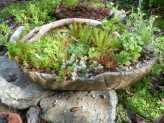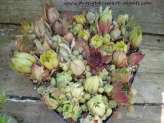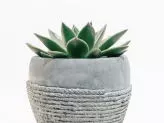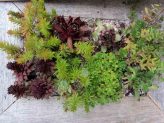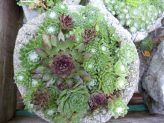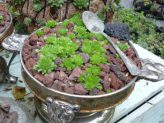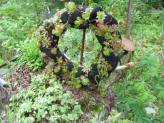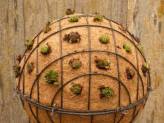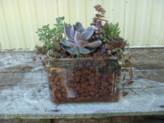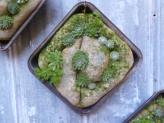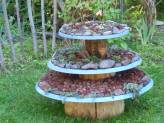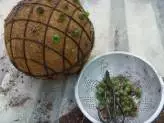Fun with Succulents; Garden Crafts, Focal Points and Unique Ways to Display your plants
I’ve always had so much fun making succulent crafts. I use many of my collection of hardy succulent plants to make mosaics and frames, succulent topiary, address signs, walls and succulent wreaths.
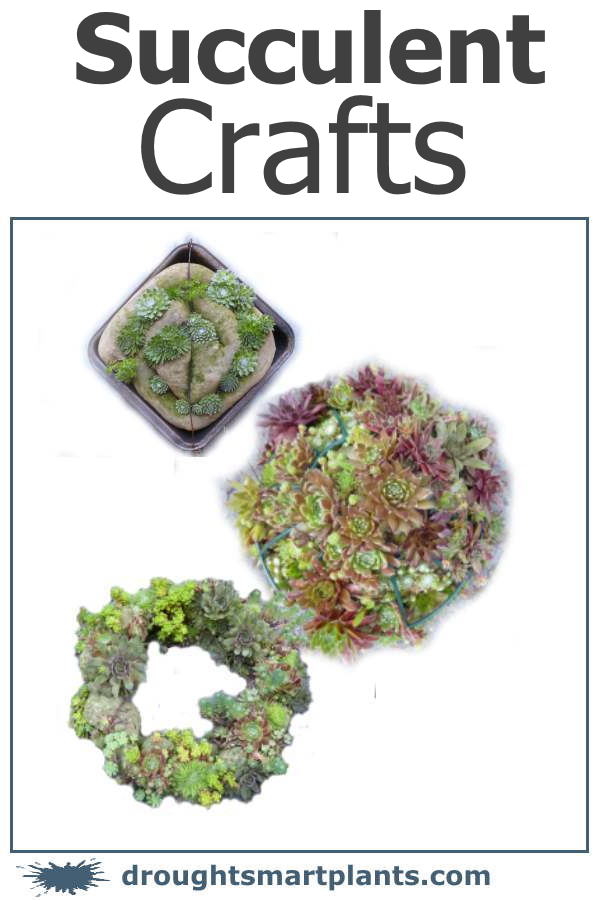
The versatility and toughness of hardy succulents like Sedum and Sempervivum have to be seen to be believed.
I can’t believe how these plants can withstand such challenging conditions, even planted in crafts like these.
A little bit of care before winter sets in, and they make it through the colder weather unscathed.
I’ve had fun making succulent balls; see the tutorial on how to make a succulent sphere, or fill succulent hanging baskets with their many forms and textures for a summer display.
Some of the designs you can use are Celtic knots, mandalas or letters, like a monogram, or take your inspiration from nature and use a swirl of different coloured succulent plants to imitate a whirlpool, or a cloud.
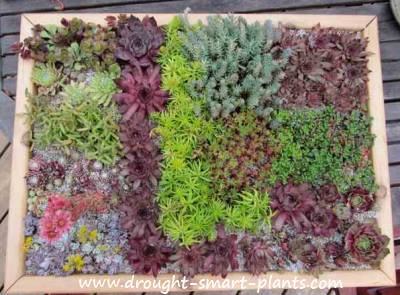
These are just a few ways to use these small rosettes, as well as stem cuttings of some of the tender Sedum such as Sedum calvifolia and Sedum ‘Burrito’ and smaller succulent plants such as Crassula brevifolia, Crassula ‘Green Pagoda’ and Crassula perforata.
Luckily, these are all easy to propagate and grow:
They make perfect filler plants with their finer textures, allowing the larger forms of the rosette types to stand out if you use them for a pattern in a mosaic, or as numbers in your address sign.
There is also a lot of interest in showcasing these plants in glass apothacary jars, fish bowls and brandy snifters.
Open jars work best for succulent terrariums, and it’s absolutely crucial never to over water them. They will thrive for a long time in these jewel like displays.
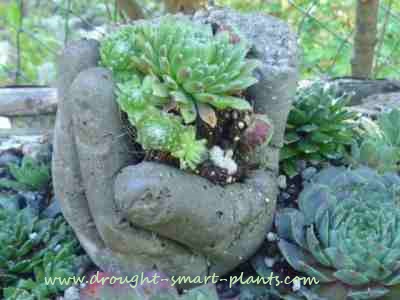
Succulent crafts are a perfect place to use those unidentified succulents or Sedum in your collection.
I also use many of the hardy succulents such as Sedum plants and Sempervivum in the same ways, but they don’t have to be brought in for the winter, simply covered with some leaves or straw (don’t use hay as it has weed seeds – a big problem when they germinate in the spring.)
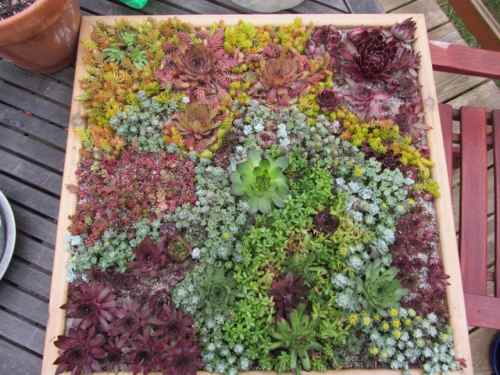
If you’re beheading your succulent plants on a regular basis to make a shorter rosette, you probably have a good start on a supply of smaller rosettes that are growing nicely on the bare stalk left behind.
These make excellent small cuttings for succulent crafts of all descriptions as they are easy to handle, root quickly and grow in to fill the space on the craft.
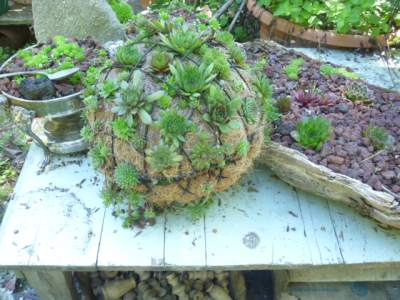
You can also use the hardy succulent plants such as Sempervivum and Jovibarba for many of the same crafts, even leaving them out for the winter.
Globes and topiary spheres, animals and other shapes are a bit hit in the garden – these are trends that don’t appear to be getting old.
Another plant that grows beautifully alongside succulents is moss. Find out more about growing it, and ways to use it.
Many Sedum varieties can be used too, as a background plant.
Succulent crafts such as mosaics, topiary and rustic root planters you make with these plants should be laid on a pile of leaves where they will be covered in snow if you get it, otherwise cover them with metal window screen to protect the plants from mice and voles.
This will give them extra protection from cold weather, and temperature fluctuations.
They won’t need water until the spring time as a rule, and too much winter wet will kill even the hardiest succulent plants. The ‘hardy’ part refers to cold and dry conditions, but they’re not indestructible.
See more about overwintering them successfully here and here.

